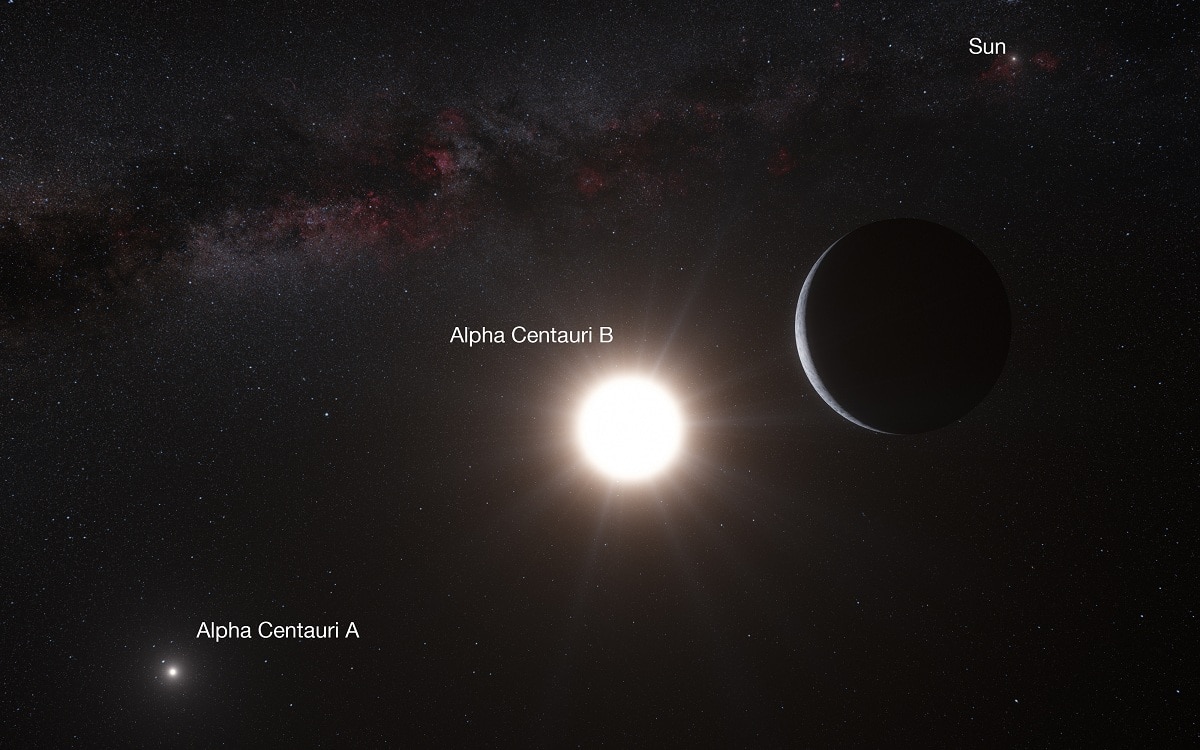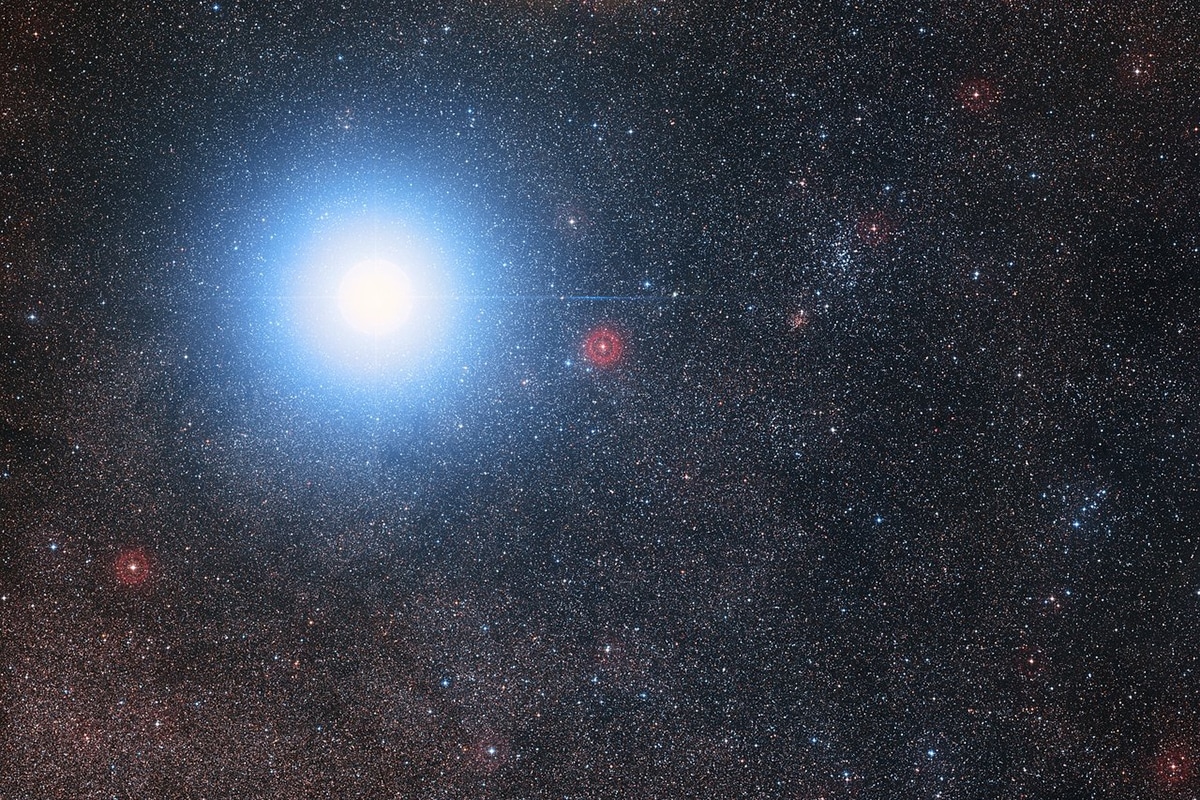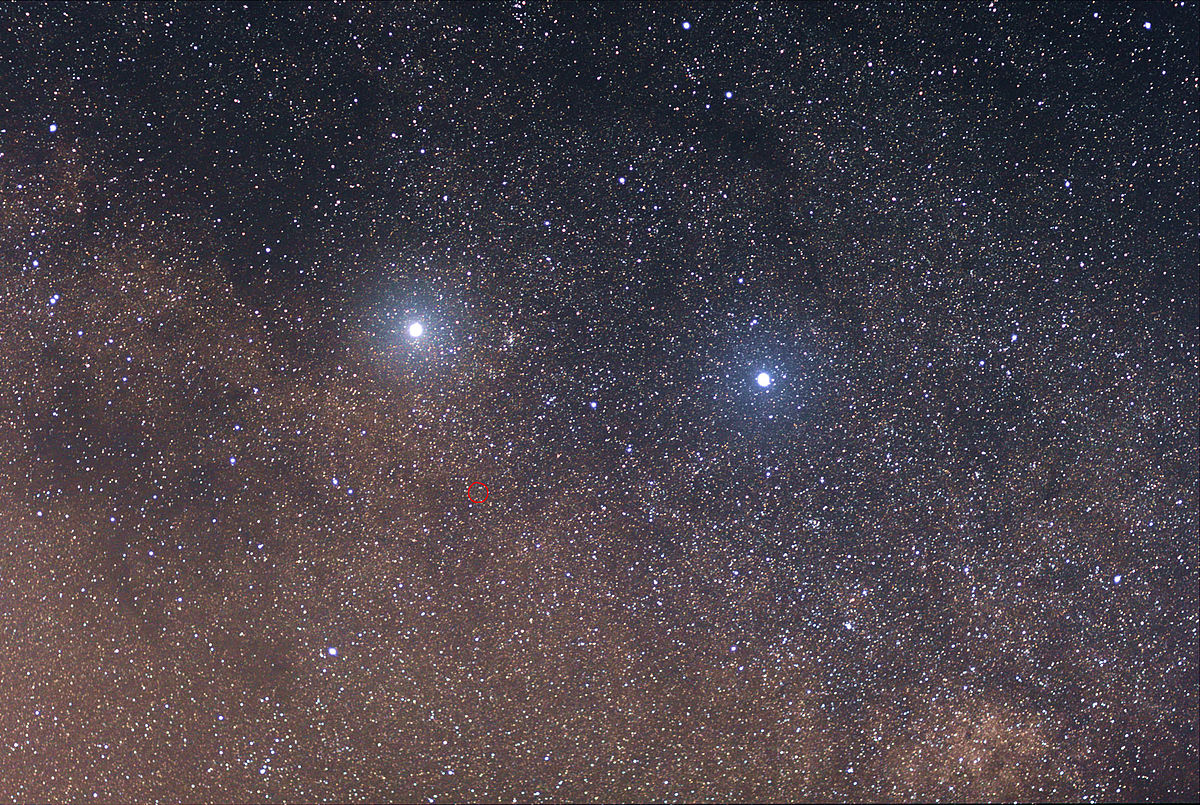
Stephen Hawking, Yuri Milner and Mark Zuckerberg head a board of directors for a new initiative called Breakthrough Starshot, whose technology could one day be used to reach Earth's neighboring star, Alfa Centauri. As well as being a relatively "easy" target, as it is one of the closest stars to the sun, astronomers have been watching our stellar neighbors for possible Earth-like planets. Alpha Centauri is our closest star, but when we talk about space, it's not that close. It is more than 4 light-years away, or 25 billion miles. The problem is that space travel, as we know it, is very slow. If the fastest-moving Voyager spacecraft left our planet at 11 miles per second when humans first left Africa, it would have reached Alpha Centauri by now.
In this article we tell you everything you need to know about Alpha Centauri, its characteristics and importance.
Alpha Centauri system

It is the closest star to the sun and is only visible in the southern hemisphere. It is the third brightest star on Earth and consists of several stars that look like a single point of light. The closest stellar neighbors to the sun are three stars in the Alpha Centauri system.
The two main stars are Alpha Centauri A and B, which form a binary pair. They are an average of 4,3 light years from Earth.. The third star is Proxima Centauri. Alpha Centauri A and B meet every 80 years in a common barycentric orbit. The average distance between them is about 11 astronomical units (AU or AU), about the same distance that we find between the Sun and Uranus. Proxima Centauri is a fifth of a light-year or 13.000 AU from the other two stars, a distance that has some astronomers questioning whether it should be considered part of the same system.
Alpha Centauri A is the fourth brightest star as seen from Earth, but the combined light from Alpha Centauri A and B is slightly larger, so in that sense it is the third brightest star visible in Earth's sky. The yellow star Alpha Centauri A is the same type of star as our sun, but slightly larger. Due to its proximity to Earth, it appears bright in our sky. Its surface temperature is a few degrees Kelvin cooler than that of our Sun, but its larger diameter and total surface area make it about 1,6 times more luminous than the Sun.
The smallest member of the system, orange Alpha Centauri B, is slightly smaller than our sun and has a spectral type of K2. Due to its cooler temperature and only half the brightness of the Sun, Alpha Centauri B will shine on its own as the 21st brightest star in our sky. These two they are the brightest components of the system, orbiting around a common center of gravity every 80 years. The orbits are highly elliptical, with the average distance between the two stars being about 11 AU, or the Earth-Sun distance.
Location and stars of Alpha Centauri

This star system is one of the closest star systems to the sun, about 4,37 light years from the sun, which is equivalent to say 41.300 million kilometers.
The stars that make up Alpha Centauri are three:
- Proxima Centauri: this star burns fuel more slowly, so it can exist longer. In August 2016, the discovery of an Earth-sized planet orbiting the habitable zone around Proxima Centauri, a planet named Proxima b, was announced. Proxima Centauri was discovered in 1915 by Scottish astronomer Robert Innes.
- Alpha Centauri A: It is an orange K-type star that belongs to a binary star system. It is bright, large, and is believed to be older than the sun. It is classified as a yellow dwarf. It has a 22-day rotation.
- Alpha Centauri B: It is a star very similar to our largest star, the Sun, of spectral type G, and rotates in an orbit of about 80 years. It is believed that he was born at the same time as A.
Scientists and astronomers have found conflicting evidence for the existence of double Earth-connected planets in Alpha Centauri. The findings are closely related to the discovery of the exoplanet Alpha Centauri B in 2012. This planet has features similar to Earth. The existence of exoplanets tells us that there must be more planets orbiting in the same system.
Could there be life?

The potential of this system to host life-bearing worlds has always intrigued scientists, but known exoplanets have never been found there, in part because it is too close for astronomers to observe planetary objects in the region. But in a paper published Wednesday in Nature Communications, an international team of astronomers identified bright thermal imaging signatures of Alpha Centauri A's habitable zone, thanks to the European Southern Observatory's (ESO) Very Large Telescope. Chili.
The signal was acquired as part of the Alpha Center Regional Near-Earth (NEAR) project, which was donated by ESO and the Breakthrough Observing Astronomy Initiative. with a donation of approximately 2,8 million euros. The latter, backed by Russian billionaire Yuri Milner, searches for rocky, Earth-sized planets around Alpha Centauri and other star systems within 20 light-years of us.
NEAR enables several upgrades to the Chilean telescope, including a thermal chronograph, which blocks starlight and looks for heat signatures from planetary objects as they reflect starlight. After analyzing 100 hours of data, found signals around Alpha Centauri A.
The planet in question has not even been named, nor has its existence been confirmed. The new signal suggests that it is about the size of Neptune, which means that we are not talking about an Earth-like planet, but rather a large ball of hot gas five to seven times larger than Earth. In the hypothetical case that it had life, it could appear in the form of microbes suspended in the clouds. The signal could also be caused by something else, such as a cloud of hot cosmic dust, more distant objects in the background, or stray photons.
I hope that with this information you can learn more about Alpha Centauri and its characteristics.